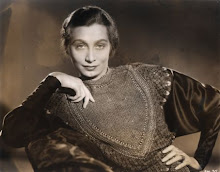
Merrily We Live. 1938. Directed by Norman McLeod.
Hal Roach Studios.
I hope they had as much fun making this as they seemed to be having on screen. Well above standard thirties fare with a rich family intruded on by a well-to-do man in the guise of a tramp. The men in these movies (unless William Powell is on hand) usually pale in comparison to the women. This is no exception.
Constance Bennett looks especially appealing in slacks. I am not usually an admirer, preferring her sister, but here Constance is a very stimulating presence. Her sleek and sophisticated cocktail is laced with just the right trace of madness. Billie Burke does her Billie Burke imitation while eating cantaloupe with a wooden spoon. But what did they do to Ann Dvorak? I love this actress but the left profile shots make her look ghastly. The exuberant Bonita Granville is terrific. Her father brings a live rabbit to the breakfast table and asks her “Is this yours?” To which Bonita responds “What color is it?” A line can make the game worth the candle. And did I mention Patsy Kelly?
Clarence Kolb does quite well trying to be Eugene Pallette and Brian Ahearne does a proper job but is no Melvyn Douglas. Tom Brown as the young man in the family looks like someone stole his coloring book and speaks like an errant metronome. Alan Mowbray always helps. Willie Best does Willie Best best. Two dogs brighten the mix, not always looking at the trainer. One is named “Off the Rug.” And there is a parrot in the entourage.
A role is reversed. A few slapstick routines ensue. And all comes out all right. There is some business at the end when a character thought deceased returns and everyone in sight faints, falls down or gets knocked down. I succumbed.
Pick of the litter: Bonita Granville.


.jpg)
+mirror.jpg)


.jpg)



.jpg)












.jpg)




+in+black+and+white.jpg)






